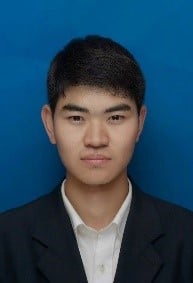Advanced Power Electronics and Intelligent Wireless Power Transfer System
A special issue of Energies (ISSN 1996-1073). This special issue belongs to the section "F3: Power Electronics".
Deadline for manuscript submissions: closed (31 May 2023) | Viewed by 5249
Special Issue Editors
Interests: power conversion technology, wireless power transfer, embedded system development
Interests: wireless power transfer; power conversion technology
Special Issues, Collections and Topics in MDPI journals
Interests: wireless power transfer; low-frequency metamaterial
Special Issues, Collections and Topics in MDPI journals
Special Issue Information
Dear Colleagues,
We would like to invite you to submit original research and review articles to a Special Issue on the topic of “Advanced Power Electronics and Intelligent Wireless Power Transfer System” in Energies (IF: 3.004, ISSN 1996-1073).
Power electronic technology has been widely used in new energy systems, energy storage systems, aerospace and other fields due to its great characteristics, which plays a crucial role in efficient conversion and utilization of electric energy. However, the operation range of power converter gradually faces the challenge of wide input voltage, wide output voltage and wide output load, and its operating characteristics are greatly affected. In addition, wireless power transfer, as a typical application area of the power electronic technology, has attracted a great amount of attention due to its convenience, reliability, and safety. Nevertheless, this technology still faces numerous problems, such as short transmission distance, low efficiency and poor anti-migration ability. This Special Issue will include, but is not limited to, the following topics:
- Power conversion topology and control technology;
- Power conversion system performance improvement technology;
- Soft switch range extension technology;
- Converter dynamics and control design;
- Intelligent design and control technology;
- Wireless power transfer technology;
- Energy harvesting technology;
- Advanced electrical materials in WPT systems, such as metamaterials, superconductor, ferrite and nanocrystalline.
Prof. Dr. Chenyang Xia
Guest Editor
Dr. Zhijuan Liao
Dr. Cancan Rong
co-Guest Editors
Manuscript Submission Information
Manuscripts should be submitted online at www.mdpi.com by registering and logging in to this website. Once you are registered, click here to go to the submission form. Manuscripts can be submitted until the deadline. All submissions that pass pre-check are peer-reviewed. Accepted papers will be published continuously in the journal (as soon as accepted) and will be listed together on the special issue website. Research articles, review articles as well as short communications are invited. For planned papers, a title and short abstract (about 100 words) can be sent to the Editorial Office for announcement on this website.
Submitted manuscripts should not have been published previously, nor be under consideration for publication elsewhere (except conference proceedings papers). All manuscripts are thoroughly refereed through a single-blind peer-review process. A guide for authors and other relevant information for submission of manuscripts is available on the Instructions for Authors page. Energies is an international peer-reviewed open access semimonthly journal published by MDPI.
Please visit the Instructions for Authors page before submitting a manuscript. The Article Processing Charge (APC) for publication in this open access journal is 2600 CHF (Swiss Francs). Submitted papers should be well formatted and use good English. Authors may use MDPI's English editing service prior to publication or during author revisions.
Keywords
- power conversion topology
- DC-DC converter
- intellectual design of converter topologies
- modeling and analysis of power conversion
- wireless power transfer
- energy harvesting
- advanced electrical materials







